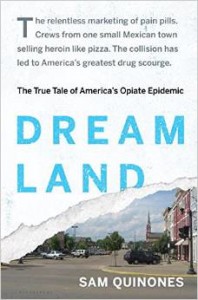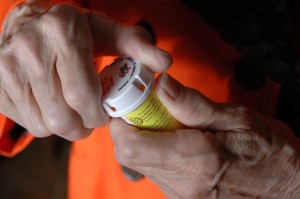Chronicling the Opiate Crisis
First of three parts
Conventional wisdom advises public speakers to limit their remarks to 15 to 20 minutes to avoid losing their audience. Supposedly, in today’s short-attention-span world, going any longer means most people will tune out.
I recently watched an author that wisdom on its ear. Sam Quinones, the author of Dreamland: The True Tale of America’s Opiate Epidemic, spoke for more an hour as he detailed the story behind his book.
As he spoke, the packed auditorium at Marshall University listened in rapt attention. When he finished, a steady line of people trooped to the microphone to ask questions. Had the moderator not called a halt so he could autograph copies some had purchased, the session might still be going. So much for short attention spans.
Public Service

In 2009 the author, who has written extensively about the drug trade, learned of six black tar heroin overdose deaths in Huntington, where I live—the first time he had ever heard of this deathly substance.
That prompted a call to police here, who told him the problem originated in Columbus, Ohio. With further investigation, he traced the source of that heroin to a small town in Mexico, where nearly everyone worked in the heroin trade.
To expand the market for the illicit drug, the group didn’t travel to major cities like New York, Chicago or Los Angeles. They went to places like Columbus and Indianapolis, where they peddled black tar with American-like ingenuity.
That included top-notch customer service, such as operators on stand-by and couriers who made personal deliveries. And, low-key, friendly dealers who blended into the woodwork instead of driving flashy cars and calling attention to themselves.
Pharmaceutical Pain
According to the author, the other key development behind the drug crisis came courtesy of the pharmaceutical industry that convinced doctors and patients alike that millions of Americans suffered from too much pain.

While Quinones said the letter writer didn’t cite any kind of medical studies (since there weren’t any) nor did he intend for people to run with this “evidence,” it wound up fueling the painkiller hysteria.
Countless numbers of marketers and sales agents cited the letter as proof that doctors could prescribe these opiates without fears that patients would get addicted. Now you know why urban legends spread so easily.
Destructive Influence
Thanks to the growing appetite for painkillers, much of Appalachia wound up with “pill mills,” which Quinones said particularly devastated the town of Portsmouth, Ohio, an hour west of Huntington.
The name for his book comes from the city’s swimming pool, which used to serve as a community hub and gathering place. Sadly, it wound up getting paved over and the local “hot spot” became Wal-Mart, which Quinones said helped fuel the drug epidemic. How? Because addicts searching for more money to feed their habit knew they could shoplift there with little fear of getting caught.
Then, into this atmosphere of pill-driven highs stepped a coterie of Mexican drug dealers offering cheap heroin, priced below popular pain relievers. The results have been deadly, but as Quinones pointed out, in the seeds of such destruction we can find the hope of renewal. I’ll discuss that next time.


